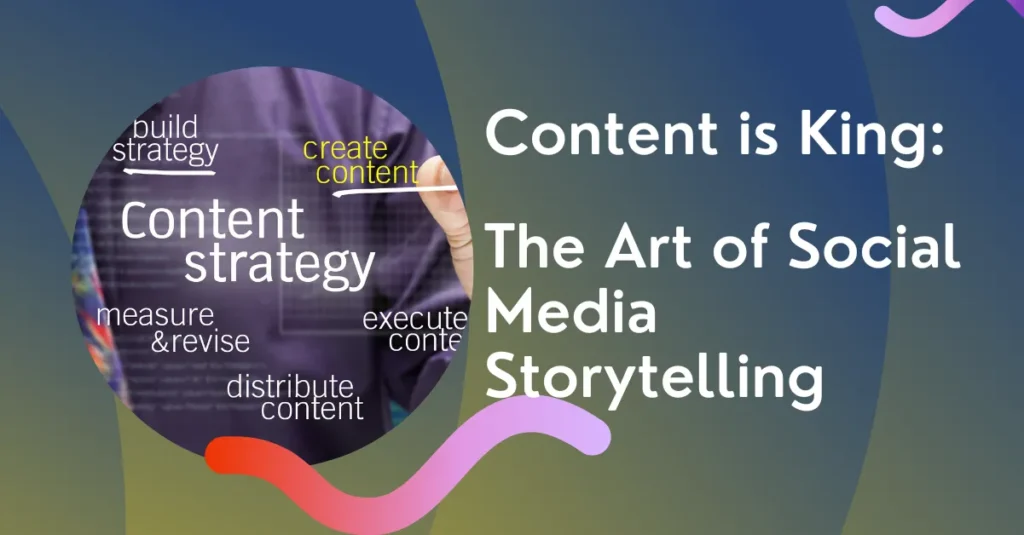In today’s fast-paced digital landscape, standing out isn’t just about being good—it’s about being different in a way that’s valuable to your audience. The good news? Leveraging AI and SEO can provide a significant competitive advantage, enabling you to stand out from the crowd and outperform your competitors.
- How to Gain a Competitive Advantage
-
Using AI and SEO: Smart Ways to Stand Out in a Crowded Market
- 1. Use AI to Personalize User Experience
- 2. Conduct Competitive SEO Audits Using AI Tools
- 3. Create Smarter Content Faster
- 4. Leverage Predictive SEO for Content Planning
- 5. Differentiate With Better UX and Page Speed
- 6. Implement Schema and Structured Data Using AI
- 7. Focus on Voice Search and Conversational Queries
- 8. Track and Adapt With Real-Time SEO Monitoring
- 9. Stand Out With Thought Leadership Content
- 10. Use AI to Understand Buyer Intent and Journey
- How to Use AI to Boost SEO Rankings
- Competitive Advantage: Do You Need to Update Your Old Posts? How? Why?
How to Gain a Competitive Advantage
Using AI and SEO: Smart Ways to Stand Out in a Crowded Market
Here are proven strategies to differentiate your brand using innovative technology, data, and optimization tactics.
1. Use AI to Personalize User Experience
AI-powered tools help you understand your audience on a granular level. Platforms like ChatGPT, Adobe Sensei, and HubSpot use machine learning to customize content, emails, and even product recommendations. The more tailored the experience, the more engaged and loyal your audience becomes.
Competitive advantage tip: Personalization at scale is hard to replicate, especially for smaller competitors without automation.
2. Conduct Competitive SEO Audits Using AI Tools
Use platforms like SEMrush, SurferSEO, or MarketMuse that integrate AI to analyze competitors’ websites, keywords, backlinks, and rankings.
Then, fill in the gaps:
- Identify keywords they’re missing
- Target long-tail variations
- Build stronger content clusters
AI and SEO work in tandem to identify strategic opportunities that manual audits may overlook.
3. Create Smarter Content Faster
Use AI content tools (like Jasper, Copy.ai, or ChatGPT) to:
- Repurpose blog content for multiple platforms
- Generate ideas based on trending queries
- Optimize titles and meta descriptions with SEO in mind
The goal is to create high-quality, SEO-optimized content quickly, freeing you to focus on strategy and customer engagement.
4. Leverage Predictive SEO for Content Planning
With tools like Clearscope, Frase, and Google Trends combined with AI forecasting, you can anticipate what your audience will search for before they begin searching.
This allows you to:
- Plan blog posts around rising keywords
- Get ahead of competitors in SERPs
- Position your brand as a thought leader
Competitive advantage means being early, relevant, and prepared.
5. Differentiate With Better UX and Page Speed
AI can also improve user experience through:
- Smart chatbots
- Dynamic web elements based on behavior
- Automated page speed testing and performance fixes (like Nitropack or Cloudflare’s AI tools)
Great UX is a silent differentiator—it increases dwell time, reduces bounce rate, and signals value to search engines.
6. Implement Schema and Structured Data Using AI
Structured data boosts your visibility in rich search results (featured snippets, FAQs, product reviews).
Use AI SEO tools to automatically:
Create schema markup for blog posts, products, and services
Test and validate structured data at scale
This additional layer of SEO enhances click-through rates and visibility, giving you a competitive edge over those relying solely on traditional methods.
7. Focus on Voice Search and Conversational Queries
AI is transforming how users search. More people are using voice search, and their queries are becoming longer and more conversational.
To optimize:
Use tools like Answer the Public or ChatGPT to predict how people ask questions
Create content that answers in a natural, concise way
Include FAQs and headings using full-sentence queries
Being voice-search-ready gives you a competitive advantage in capturing mobile and smart-device traffic.
8. Track and Adapt With Real-Time SEO Monitoring
Modern AI tools don’t just optimize—they monitor performance in real time.
Get alerts when:
Your rankings drop
A competitor outranks you
A new keyword gains volume
This allows you to act quickly and adjust your strategy before competitors notice the change.
9. Stand Out With Thought Leadership Content
Most brands recycle SEO blogs. To stand out:
Use AI to summarize research papers and turn them into digestible thought pieces
Add your insights or industry takes
Repurpose as LinkedIn carousels, Twitter threads, or infographics
Originality + authority = long-term competitive advantage.
10. Use AI to Understand Buyer Intent and Journey
Beyond traffic and rankings, the real value lies in conversions.
AI can:
Segment users based on behavior
Match keywords to intent (informational, transactional, navigational)
Help you place the right content in the right stage of the funnel
AI and SEO combined don’t just drive clicks—they help move customers toward action.
How to Use AI to Boost SEO Rankings
Artificial Intelligence (AI) has rapidly become a game-changer in digital marketing and SEO. Leveraging AI can streamline content creation, keyword optimization, and performance tracking. If you’re looking to boost your SEO rankings, AI is a powerful ally.
1. Content Creation and Optimization
AI-powered writing tools, such as ChatGPT or Jasper, can help you generate high-quality blog posts, meta descriptions, and ad copy. These tools are invaluable for:
Crafting SEO-friendly titles and headings
Creating FAQs and featured snippets
You can use AI to maintain consistency and optimize readability, structure, and tone across your content.
2. Keyword Research and Analysis
AI tools, such as SurferSEO, Clearscope, and SEMrush, utilize machine learning to identify keyword opportunities. They analyze competitor content, suggest relevant long-tail keywords, and forecast keyword difficulty and search intent. This allows for more accurate and targeted content strategies.
3. Content Gap Analysis
AI can help you identify topics or questions your competitors are covering that you are not. Filling these gaps not only improves SEO rankings but also enhances user value and content authority.
4. User Intent Matching
Modern AI understands the nuances of search queries. Tools like MarketMuse analyze content to ensure it aligns with the user’s intent—informational, transactional, or navigational. This ensures that your content is optimized for what users are looking for.
5. Automated Technical SEO Audits
AI-based tools like Screaming Frog or Sitebulb can conduct comprehensive audits, checking for broken links, duplicate content, poor mobile optimization, and other issues. Addressing these issues boosts crawlability and indexing.
6. Predictive Analytics
AI tools can forecast which pages are likely to rank based on their structure, content, and links. This allows you to allocate resources wisely and focus on high-return optimization.
7. Voice Search Optimization
As voice search continues to grow, AI tools can analyze how users phrase their voice queries. This enables you to structure content using natural language and FAQs that align with spoken queries.
Final Thoughts
Using AI for SEO is not about replacing humans, but rather about enhancing strategic decision-making and efficiency. From content creation to performance analytics, AI provides actionable insights that can significantly improve your SEO rankings and digital visibility.

Competitive Advantage: Do You Need to Update Your Old Posts? How? Why?
In the ever-evolving digital content landscape, staying relevant is crucial. While publishing fresh content is essential, updating old blog posts can offer an often-overlooked competitive advantage. If your blog has been running for some time, you likely have a treasure trove of old posts that still generate traffic or contain valuable information. So, the question arises: should you update your old posts? The answer is a resounding yes.
Why You Should Update Old Posts
1. Improved SEO Rankings
Search engines favor updated content. When you refresh an older post with new statistics, images, internal links, or updated keywords, it signals to search engines that your content is current and valuable. This can significantly improve your position on search engine results pages (SERPs).
2. Enhanced User Experience
Outdated content can frustrate readers. Broken links, obsolete data, and irrelevant advice all reduce credibility. Updating posts ensures that your audience receives accurate and useful information, building trust and authority.
3. Increased Engagement
Refreshed content often performs better on social media and newsletters. You can promote it as if it’s new, giving it a second life and increasing traffic and engagement.
4. Better Conversion Rates
When you update your calls-to-action (CTAs), product links, or offers within an old post, it can lead to higher conversion rates. A well-performing post with updated CTAs becomes a stronger sales or lead-generation tool.
5. Maximized Content ROI
Creating content takes time and resources. By updating old posts, you extend their shelf life and maximize their return on investment.













Love this! For small businesses on a budget, organic traffic through smart SEO and genuine engagement in the comments section can be a game-changer. It’s about quality over quantity in both areas.
Traffic is great, but engaged traffic that leads to comments is gold for small businesses. It signifies a real connection with your audience.
Pingback: Creating Social Media Content That Drives Real Business Results